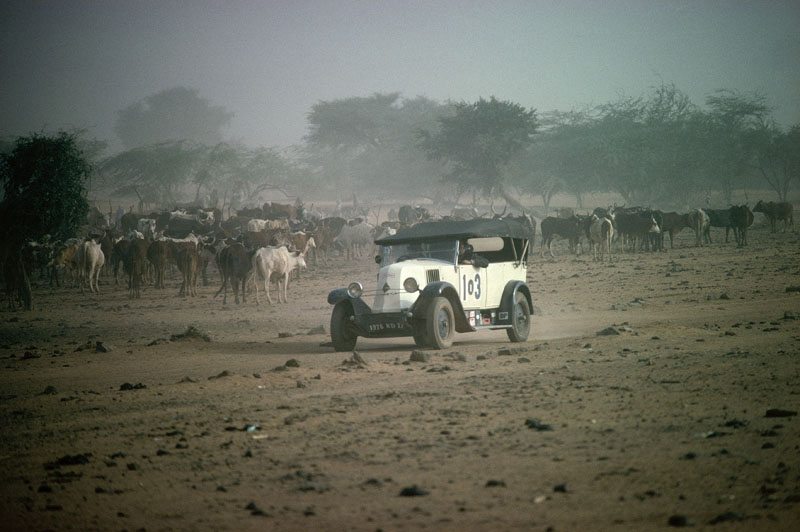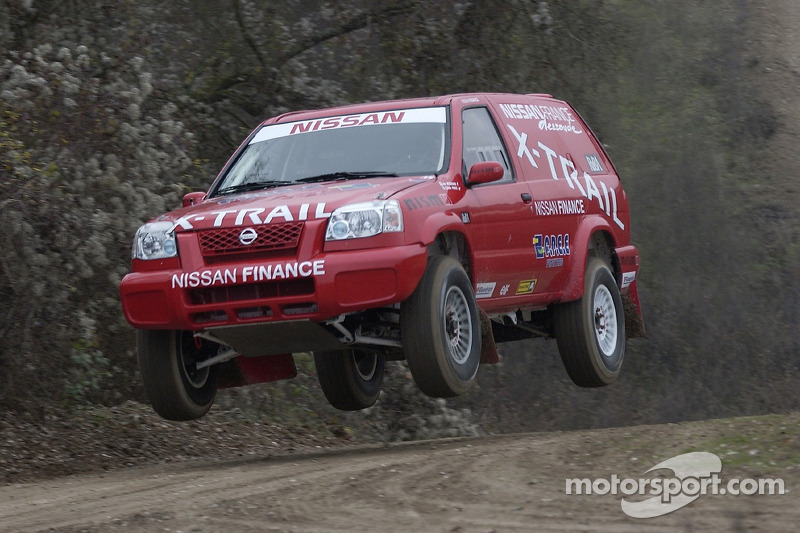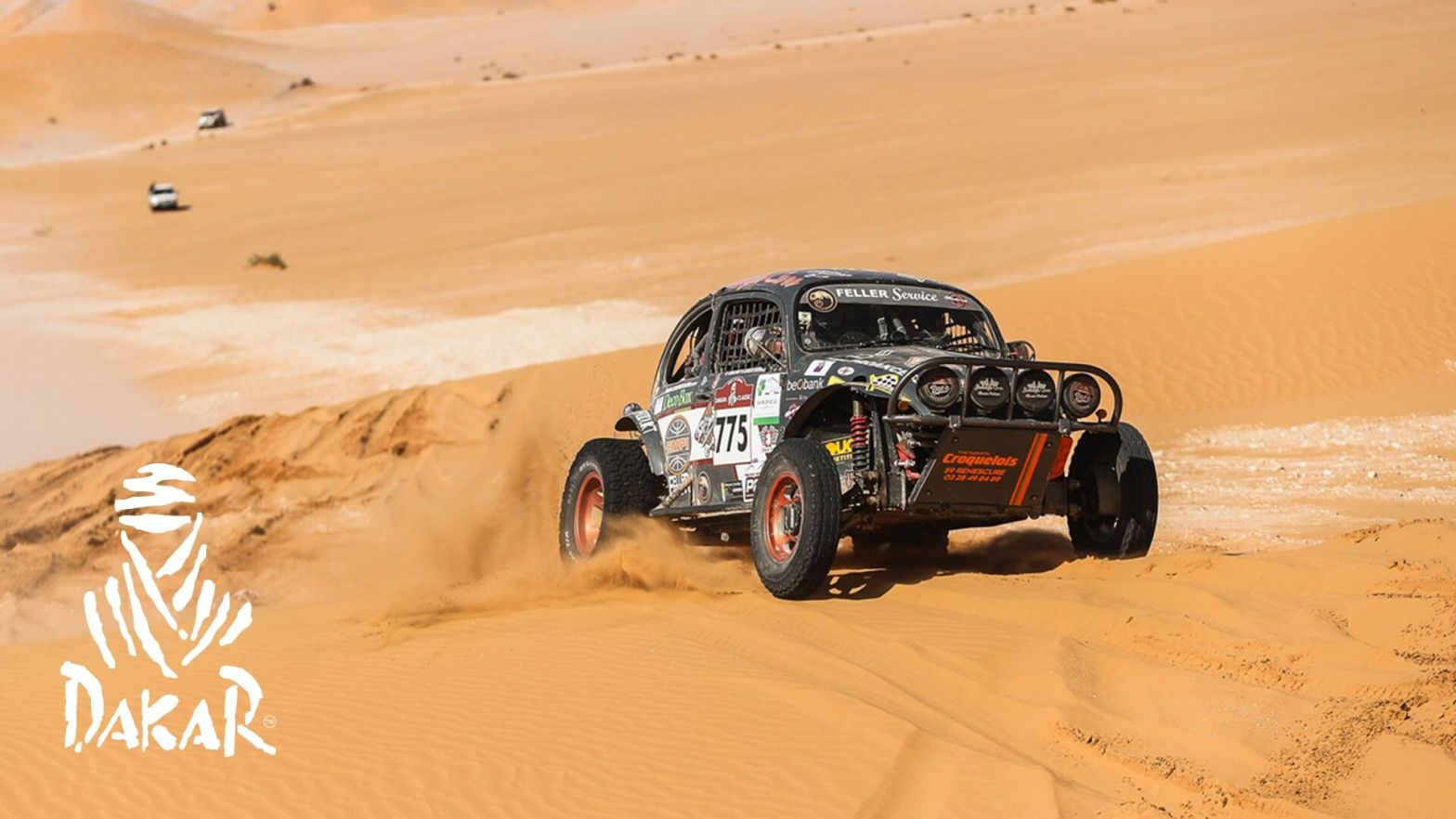“Do Not Go Where The Path May Lead, Go Instead Where There Is No Path And Leave A Trail” – Ralph Waldo Emerson.
Riding a motorcycle in a desert rally can be tricky, the car racers have the luxury of carrying a navigator along, still, the bikers have to do it all by themselves.

In 1977, the French motorcycle racer Thierry Sabine got lost in the Lybian desert, during the Abidjan-Nice Rally, a region known by the locals as the Ténéré desert. In a desperate attempt to find the route, Sabine lost control of his Yamaha and fell, smashing his compass. After running out of gas, he found himself with no food and just a little water left. After a while, he abandoned his machine and started to walk under the unforgiving sun. The rescue party found him, on the verge of death, after 3 days and 2 nights lost in the desert.

For us, the average people, it is hard to understand the minds of the hard-core sports competitors and how they use adversity as an engine to move forward. For Sabine, that near-death experience only increased his fascination for the desert. It inspired him to create a new challenge, aimed at all those who share his love for the majestic beauty of Northern Africa. A new rally that would become the most legendary of them all.

The Frenchman envisioned a competition starting in Paris and stretching for more than 10,000 Km, crossing 6 different countries, France, Algeria, Niger, Mali, Upper Volta (Burkina Faso), and finishing in Dakar, the capital of Senegal.
The route would present more than 3,000 km of gruesome off-road challenges: rivers, mud, bushes, rocks, and, of course, the magnificent Sahara desert, in other words, paradise on earth for the adventure seekers.
Thierry Sabine didn’t waste any time making his dream come true, and on Boxing Day, 1978, nothing less than 80 cars, 90 motorcycles, and 12 trucks gathered in front of the Eiffel Tower, for the very first Paris-Dakar Rally. The competition was created with one main goal, to give the amateurs racers equal opportunity to win, but the big corporate guys showed up strong for this first event.

Yamaha was the dominant brand among the bikers, 38 out of the 90 registered motorcycles were the mighty XT 500. One of the biggest Yamaha importers in France, Sonauto, entered a team with 4 riders, fully supported by the factory. The Yamaha-Sonauto Race Team was assisted by all the good stuff money can buy: technicians, lots of spare parts, a Unimog truck, and a Range Rover as support vehicles, and even a Piper Aztec aircraft for any sort of emergency.

Honda was determined to rain on Yamaha’s parade, and the weapon of choice was the newly released XL 250S, a bike that would become a worldwide success. The company offered massive discounts for entrants who decided to buy the XL and also complimentary support throughout the rally, with technicians, engineers, Unimogs, and even a DC3, a bigger airplane than Yamaha’s. In total, 29 XLs left Paris towards Dakar.
A few other factory-sponsored teams like BMW and Moto Guzzi could be found, but Honda and Yamaha were the strongest. All the other riders were amateurs, with little or no sponsorship at all.

The amateur spirit, that Sabine wanted so much, was more intense among the car teams. The strongest competitors were Toyota and Range Rover, but a wide array of cars could be seen at the starting line, especially the French brands. A good example is the Citroen Dyane above, driven by C. Sandron and P. Alberto. The little car is powered by an air-cooled, twin cylinder, 600cc engine, although it was the “largest” displacement among the 2CV family, the little Dyane produced a meager 32 HP, with a top speed of 120km/h. The team was racing on a very tight budget but that didn’t prevent them from finishing the rally.

It is quite difficult to find either information or pictures of the trucks that participated in the first Paris-Dakar, but the one car that shows up in every Google search is the Thomson-Oasis red and white Peugeot 404, driven by Mark Andre and Philippe Puyfouhoux. This UTE became very popular around the world, thanks to its roughness and the “bulletproof” powertrain; qualities that are not commonly associated with French cars.

The car you see in the picture above is another proof of the indomitable amateur spirit that permeates the Paris-Dakar: Philippe Hayat, a journalist, Jean-Pierre Domblides, a school teacher, and Daniel Nolan, a technician from Renault Gordini, decided to face the challenge driving a 1927 Renault KZ 11 CV. Obviously, they were not looking for the glories of victory but simply for the intoxicating taste of the adventure.

Among the competitors, there were Seven women: all of them were motorcycles riders: Martine de Cortanze, Pascale Geurie, Martine Rénier, Marido, Christine Martin-Lefort, Marie Ertaud, and Corinne Koppenhague.
“A challenge for those who go. A dream for those who stay behind.” – Thierry Sabine.

On December 26, 1978, the Deputy Mayor of Paris, Monsieur Dehais, waived the green flag on the first Dakar Rally. One hundred seventy-two vehicles tore out of the Place du Trocadero.
The rally was divided into 8 stages, starting in Paris and crossing France down south, towards Africa. At the end of this part, the competitors embarked on a ship, crossing the Mediterranean sea and landing in Algiers. During their journey through Africa, they would face 3,000 km of “specials”, the name Sabine gave to portions of extreme hardcore “off rodding”.

Each day the competitors must have to cover an average of 550 miles, stopping at a base camp for a decent meal and a well-deserved rest. In many cases, the technicians had to work through the night repairing the machines for the next day. For the amateurs, life was a bit harder; with no support crew, drivers and riders served as mechanics as well.

During the third stage, some journalists left the city of Assamaka ahead of the riders, the idea was to position themselves along the stretch to take pictures of the passing competitor. Thanks to their inexperience, they took a wrong turn at a fork of the road, and to make the matter even worse, the first group of riders coming after them just followed the tracks on the sand, completely missing the original path. Thierry Sabine quickly dispatched the support helicopter to intercept the bunch before they got too deep into the desert.
The first casualty

At the very beginning of Stage four, the French rider Patrice Dodin was approaching the starting line with his helmet unbuckled. He tried to fasten it while riding but lost control of his Yamaha and fell. His helmet rolled off and he struck his head on a rock. Since he was still at the base camp, the doctors immediately attended to him, and later on, he was airlifted to Paris but died a few days later in hospital.
Close to the end

After the end of the 5th stage, the competitors had a well-deserved day off, with plenty of time to rest and to properly fix their machines. Sabine knew too well this day off was necessary because the last 3 stages (more than 3000 km) of the race would be a real nightmare.
The 7th stage, the path from Bamako to Nioro, was a dreadful challenge for everyone, with holes big enough to swallow a Citroen 2CV and soft sand that could make the whole front wheel of the bikes disappear. Only one rider completed the stage on time: Philippe Vassard on a Honda XL-250S. Sabine decided to use his power and bent the rules by extending the length of the stage, giving more time for other competitors to finish the route.
Every day competitors were dropping off the race, victims of mechanical breakdowns, injuries, and extreme fatigue. The desert was eating engines and transmissions for breakfast and bones for lunch.
The first “King of Dakar“

With only one day left before reaching Dakar, Cyril Neveu was leading the rally when the engine of his Yamaha XT500 blew up. The mechanics were able to replace the unit overnight, securing Neveu’s leading for the next day, and sure enough, he was the first rider to cross the finish line. He won the rally without scoring a single “special” course. In the end, the overall qualifying was the most important factor.

Gilles Comte finished in second overall, confirming the superiority of the Yamaha XT500. (picture above)

Phillipe Vassard, was the third rider to cross the finish line, saving Honda from shame. His bike was the only XL 250S among the top 5.

The Range Rover driven by Alain Génestier, Joseph Terbiaut, and Jean Lemordant, was the first among cars and fourth overall.

Closing the top 5 positions, the brothers Claude and Bernard Marreau, driving a heavily modified Renault 4.

The “First Lady” of the 1979 Paris-Dakar was Marine de Cortanze, she finished 19th overall, riding a Honda XL 250S.
In the end, only 74 vehicles survived the onslaught. They gathered at the shores of Lake Rose, the official “finishing line” of the race, 30 km from Dakar. At that point the competitors forgot the fatigue and together, they celebrated the end of the most challenging rally ever.

Among all those modern, purpose-built machines, there was the valiant 1927 Renault. The team finished 71st overall.
Thierry Sabine’s original idea was a huge success, the Paris-Dakar Rally became an annual event, attracting all sorts of adventure seekers. Even celebrities who had nothing to do with motorsports like Mark Thatcher, the playboy son of then British Prime Minister Margaret Thatcher. Mark and his team, the co-driver Anne Charlotte, and the mechanic got lost in the Sahara desert for six days, during the 1982 edition of the Paris-Dakar, until the Algerian army found them, 50 km off the route.

The rally also cast a spell on some famous racing drivers, like the 6 times Le Mans winner Jacky Ickx. He gave Mercedes-Benz its first Paris-Dakar victory in 1983, at the wheel of a 280GE. (picture above).
A deadly competition

On January 14, 1986, Thierry Sabine was flying in a helicopter, during a rescue mission near the city of Timbuktu. He was looking for stranded competitors around that stretch of the desert when the pilot lost control of the aircraft and crashed against the dunes. Sabine lost his life as a victim of the accident. The two pilots and another crew member also died in the crash. The creator of the Paris-Dakar became part of a long and sorrowful list of victims related to the competition.
Any kind of motorsport activity can be dangerous and the competitors are well aware of this, but the Paris-Dakar rally stands on another level entirely. Since its first edition, 76 people have died due to being involved with the rally in one way or another.

So far, a total of 31 competitors perished while racing, 22 were motorcycle riders, 6 car drivers, and 1 truck driver. Two other competitors died victims of local rebel conflict. 45 casualties are considered “noncompetitors”, like journalists, support crew, and spectators.
The competition became extremely controversial and even the Catholic church publicly condemned the race. In 2007, a Vatican newspaper called the rally a bloody, irresponsible, violent, and cynical attempt to impose questionable Western tastes on the developing world. Well, well, look who’s talking.
The most popular rally in the world
The political instability in western Africa made it very difficult for the organizers to keep the original route. Every time a bloody revolution started in one of those countries, the rally had to take a different path. Even though the popularity of the Paris-Dakar kept growing and in 1988, it reached 603 participants.

That was the time when the official factory teams dominated the competition. Among bikes, Yamaha, Honda, and BMW fought fiercely for supremacy, and in the car field, the battle was between Citroen/Peugeot, Mitsubishi, and Porsche. The picture above shows the official Porsche-Rothmans team at a base camp, in 1986. Porsche obliterated the competitors that year with its new all-wheel drive, turbo-powered 959 model, a car that was originally designed to compete in the WRC. Porsche finished with an amazing one-two victory, René Metge/Dominique Lemoyne in first and Jacky Ickx/Claude Brasseur in second. The team had to overcome a serious issue when all three support trucks suffered mechanical breakdowns and were forced to retire from the competition. As an emergency solution, they packed the third ( and the slowest) 959 with the most essential spare parts end sent it to follow the other two cars. The “support” 959, even overloaded with parts, finished the rally in 6th overall.

The 2001 edition was the last time the traditional route “Paris-Dakar” was used, from 2002 forward, the organizers would try different European cities as starting points and different routes as well. The name of the competition changed to “Dakar”, even if the city no longer had ties with the rally.
Dakar goes to South America

In 2008, the political instability in Africa forced the organization to cancel the Rally that year. As a replacement event, the first edition of the Dakar Series was held in Hungary and Romania.

For the next year, the organizer decided to abandon the African continent and the rally was transferred to South America. Countries like Argentina, Peru, Chile, Ecuador, and Bolivia have similar terrains to those found in Africa, with a much more stable political scenario. The debut rally in South America was held in Argentina and Volkswagen Tiguan (picture above) was declared the overall winner, claiming a 1-2 finish. That was the first time first a diesel-powered car won the event.
Saudi Arabia

South America held the Dakar rally for 10 years but after some countries failed to reach an agreement with ASO (the company that organizes the rally) for the 2020 event, the competition found a new home, in Saudi Arabia. As I write the final lines of this post, the plans for the Dakar rally 2023 are already set. From December 31st to January 15, the competitors will be crossing the country, starting from the beaches of the Red Sea and finishing at the sands of the Arabian Gulf in Dammam.
The real “King of Dakar”

In 1992, for the first time, the rally didn’t finish in Dakar, instead, the new route took the competitor all the way to Cape Town, in South Africa. The picture above shows the winner of the motorcycle class that year, Stéphane Peterhansel.

Peterhansel became the most successful competitor in the history of the rally. The Frenchman has won the competition six times riding motorcycles and eight times at the wheel of a car. He is still very much active, the picture above shows him in 2022 when he was forced to retire from the competition when he hit a rock and destroyed the rear suspension of his Audi e-Tron.
The modern Dakar

Not only the location has significantly changed after more than of Dakar rally, and some new classes were added, like the “Quad” and the “classic” (pictured above), but one thing has remained true, the amateur spirit of the competition. Certainly, the official factory teams will always outshine the independents, but the organization limits the big guys to a 1/4 of the total number of participants.

That is how the Dakar was born, relying on the independent adventurers, the kind of people more interested in overcoming the challenges of the desert than in the spotlights of the victory.
If you want to see the amateur competitors in action, take a look at the video above. It shows the highlights of the Classic Dakar 2022.

That. Is. Wild. I can’t believe someone wanted to race that Citroen Dyane in the first rally.
LikeLike
During my research for this post, I came across some crazy vehicles that participated in the Paris-Dakar rally. I believe the craziest of them all was a team of four Vespa scooters that raced on the 1980 event. Amazingly, two of them finished the rally.
LikeLike